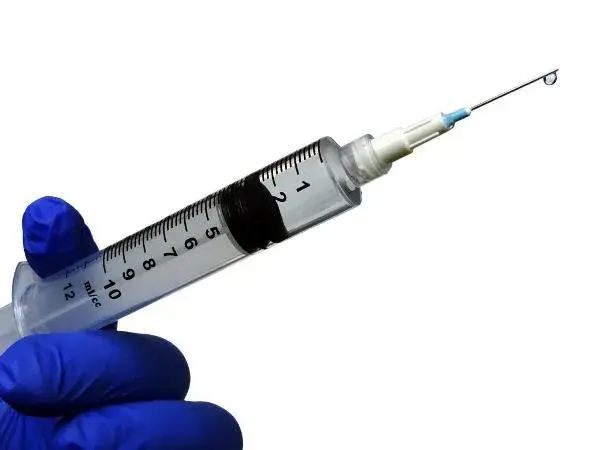Measles is considered one of the most contagious of all infectious diseases spread via the airborne route. Many measles symptoms include things normally seen this time of year from colds and flu: runny nose, fever, cough, sore throat, sneezing, loss of appetite, and red eyes. These are followed by a rash that spreads over the body.
 On January 23, CDC issued a Health Advisory Network (HAN) Advisory to notify public health departments and healthcare facilities about a measles outbreak and to provide guidance for healthcare providers and primary care providers nationwide in hospitals, emergency rooms and microbiology laboratories. As of February 6, reported cases of measles increased to 121 in 17 states, according to the CDC. A majority of these cases (85 percent) are part of the large, ongoing multi-state outbreak linked to an amusement park in California. Although a source has not been identified, the outbreak likely started from a traveler who became infected overseas with measles and visited the amusement park while contagious. The reported number of cases is expected to rise as the visitors who came in contact with the infected traveler, may have taken the disease back to their states where it may spread. In addition, the earlier cases were linked to people who visited the parks in mid-December, but health officials now say that other people with measles were at the parks in January while infectious and also have spread the disease.
On January 23, CDC issued a Health Advisory Network (HAN) Advisory to notify public health departments and healthcare facilities about a measles outbreak and to provide guidance for healthcare providers and primary care providers nationwide in hospitals, emergency rooms and microbiology laboratories. As of February 6, reported cases of measles increased to 121 in 17 states, according to the CDC. A majority of these cases (85 percent) are part of the large, ongoing multi-state outbreak linked to an amusement park in California. Although a source has not been identified, the outbreak likely started from a traveler who became infected overseas with measles and visited the amusement park while contagious. The reported number of cases is expected to rise as the visitors who came in contact with the infected traveler, may have taken the disease back to their states where it may spread. In addition, the earlier cases were linked to people who visited the parks in mid-December, but health officials now say that other people with measles were at the parks in January while infectious and also have spread the disease.
The advisory recommends for healthcare providers to:
- Ensure that all of their staff and patients are current on measles, mumps and rubella (MMR ) vaccine;
- Consider measles in the differential diagnosis of patients with fever and rash and ask patients about recent international travel or travel to domestic venues frequented by international travelers;
- Ask patients about the history of measles exposures in their community; and
- Isolate suspect measles case-patients and immediately report cases to local health departments to ensure a prompt public health response.
The advisory also states that due to the success of the measles vaccine program, many young healthcare providers have never seen a case of measles and may not take a detailed history of travel or potential exposure and initially may not consider the diagnosis in a clinically compatible case.
Many of CDC’s recommendations apply to first responders as well. For instance, responders across the country should educate themselves on the disease and symptoms in order to be best prepared to care for patients. Extra precautions should also be taken by personnel to protect themselves from potential measles exposure when evaluating and transporting persons with suspected infection. In addition:
- First responders are advised to have documented evidence of their own immunity against measles. CDC guidance is for those without evidence of immunity to receive two doses of vaccine for measles and mumps protection, separated by at least 28 days, and one dose for rubella protection. For more information, see Measles Vaccination.
- In order to minimize risk, responders transporting patients displaying symptoms should wear particulate respirators (e.g., N-95), although these respirators should only be used as part of a comprehensive respiratory protection program that includes appropriate screening, training and fit-testing.
- Those who have transported a suspected measles patient and develop measles-like symptoms should seek medical attention. All suspected cases of measles must be reported immediately to the local health department responsible for the municipality in which the patient resides. For more information, see Measles Information for Healthcare Professionals [Link no longer valid, http://www.cdc.gov/measles/hcp/index.html].
- Since the measles virus can survive on infected surfaces or hang in the air for up to two hours, ambulances and transport vehicles should be taken out of service for a minimum of two hours after transport of a patient with known or suspected measles.
Although the current outbreak is making national news, the U.S. experienced a record number of measles cases during 2014, with 644 cases in 27 states — more than three times the number of reported cases in 2013 and over 10 times the number of cases reported in 2012 to CDC's National Center for Immunization and Respiratory Diseases. This is the highest number of cases since measles elimination was documented in the U.S. in 2000.
In summary, an outbreak at a large national tourist venue is a worst-case scenario for disease spread. The current multi-state outbreak underscores the ongoing risk of measles importation, the continued need for measles vaccine coverage for healthcare providers and first responders, and the importance of a prompt and appropriate public health response to measles cases and outbreaks. Medical facility staff and public health departments across the country should educate themselves on this disease and be prepared for patients. For more information, visit: Healthcare Personnel Vaccination Recommendations, and Measles (Rubeola).
